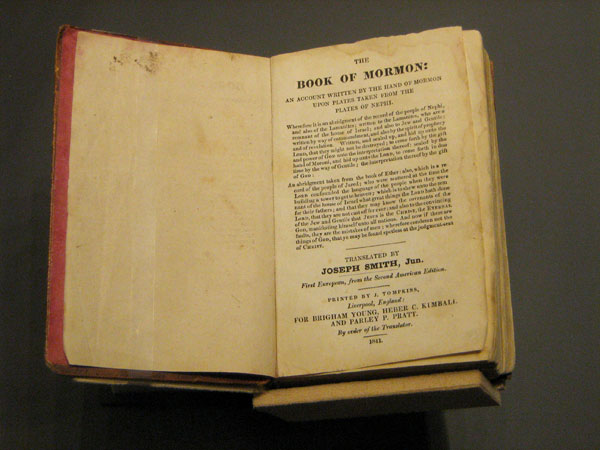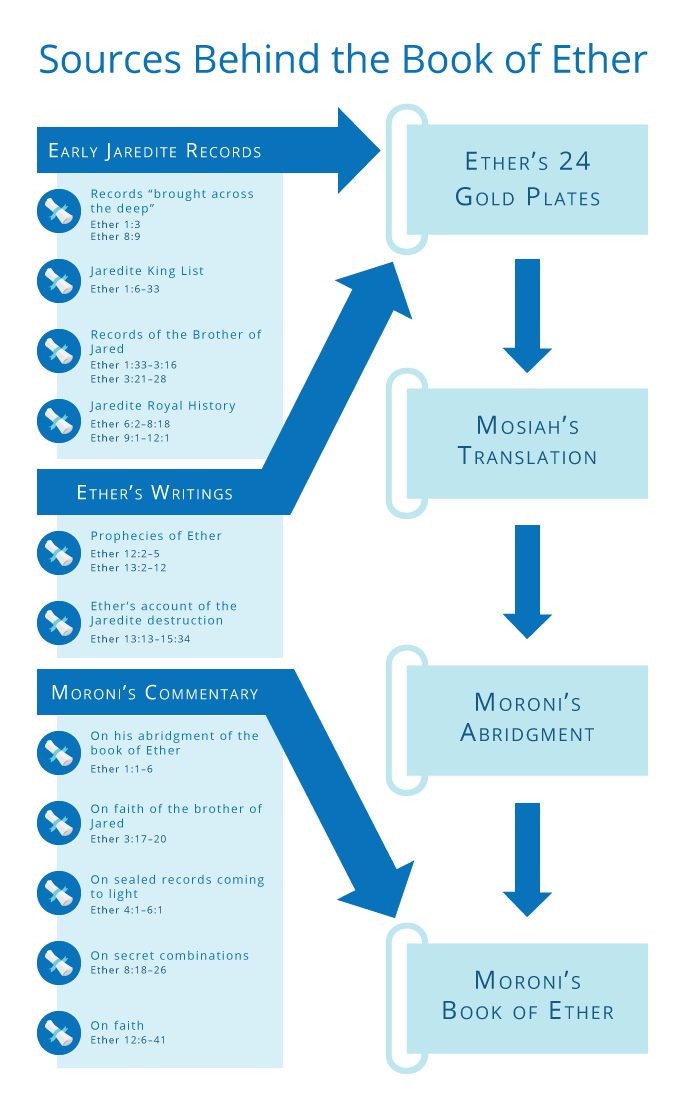You are here
Why Did Nephite Authors Use Repetitive Resumption?

Alma 19:36
The Know
The Book of Mormon is full of repeated words and phrases. Many of these repetitions have to do with poetic structures called parallelisms.1 However, one particular type of repetition—called repetitive resumption—is likely a feature of the Book of Mormon’s editing process, rather than its poetry.2 Learning to recognize repetitive resumption may be worthwhile because its use in the Book of Mormon often points out or clarifies important teachings.
Repetitive resumption was often used by biblical authors to add content to an existing text while still maintaining a coherent flow of ideas.3 After interrupting an idea with an explanatory or clarifying aside, the writer would then repeat a phrase close to the beginning of the interruption. This would provide a signal to the reader that the interruption was over and that there would be a return to the original flow of ideas. According to biblical scholar David Bokovoy, repetitive resumption was “one of the primary signs of editorial activity in the Old Testament.”4
This practice is also found repeatedly throughout the Book of Mormon.5 For instance, in Alma 19:35–20:1, Mormon interrupted the narrative after the phrase “they did establish a church among them” and then returned to the narrative with the similar phrase “they had established a church in that land”:
And it came to pass that there were many that did believe in their words; and as many as did believe were baptized; and they became a righteous people, and they did establish a church among them. And thus the work of the Lord did commence among the Lamanites; thus the Lord did begin to pour out his Spirit upon them; and we see that his arm is extended to all people who will repent and believe on his name. And it came to pass that when they had established a church in that land, that king Lamoni desired that Ammon should go with him to the land of Nephi, that he might show him unto his father.6
The repeated idea acts somewhat like brackets, which set off the editor’s commentary. In this particular case, Mormon’s aside helps drive home the doctrinal point that he wanted readers to understand from the story he had just shared. His message was first about how the Lord was reaching out to the Lamanites and second about how His “arm is extended to all people who will repent and believe on his name” (Alma 19:36).
David Bokovoy and John Tvedtnes have noted that Mormon’s inserted commentary “perfectly reflects” the content of the Book of Mormon’s Title Page.7 The Title Page states that the Book of Mormon was written primarily “to the Lamanites” so that they would know they are “not cast off forever.” And yet it also states it was written “to Jew and Gentile” to convince them that “Jesus is the Christ, the Eternal God, manifesting himself unto all nations.”
Bokovoy and Tvedtnes remarked, “No wonder Mormon chose to emphasize the fact … that God poured out his spirit amongst the righteous Lamanites and that mercy is available to all people through the atonement of Jesus Christ. These observations support the thesis of the entire [Book of Mormon].”8 Not all uses of repetitive resumption in the Book of Mormon are so profound, but careful study and reflection usually reveal that there is a good reason for each interjection.9
The Why
Instances of repetitive resumption provide good evidence that the Book of Mormon’s source texts were written, abridged, and edited by authors trained in the Israelite literary tradition.10 According to Bokovoy and Tvedtnes, “Many of the editorial efforts witnessed in the Book of Mormon parallel the literary techniques now known to have been used by Israelite authors in the Old Testament.”11
Bokovoy has noted that repetitive resumption, in particular, “supports the authenticity of the Book of Mormon” because even though the technique is repeatedly attested in the Bible, it “had not yet been identified by biblical scholars in 1830.”12 Frequently interjecting commentary might be natural for anyone making up a hasty story on the fly, as Joseph Smith is sometimes accused of doing with the Book of Mormon. But it’s unlikely that Joseph or any other American in 1830 would have repeatedly inserted commentary in a way that restates phrases at the point of interruption.13
It should also be remembered that, according to eyewitnesses, Joseph orally dictated the Book of Mormon without using any notes or reference materials and without relying on his scribes to help him keep track of the flow of the narrative.14 Some instances of repetitive resumption come after rather lengthy asides, and it would have required remarkable focus and memory to recall the wording at the outset of each interjection.
For instance, when editing the Jaredite record, Moroni interrupted the commentary for two whole chapters (Ether 3:9–6:2) before he resumed his discussion about the brother of Jared and the shining stones.15 Thus both the time period and the process of the translation help establish that the Book of Mormon’s use of repetitive resumption is evidence of its historical authenticity.
Paying attention to repetitive resumption can also help us better understand the perspectives of Book of Mormon authors and their underlying reasons for including certain source texts or materials. We might ask ourselves: Why is this point being clarified? Why is the narrative being interrupted here? Are there patterns to these interruptive commentaries? And what might I have misunderstood without the inserted comment? Such questions can reveal themes, patterns, connections, and insights that we might have otherwise missed.
So the next time you come across an interjection in the Book of Mormon, make sure to look for a repeated phrase that signals the resumption of the narrative. Doing so may deeply enrich your perspective on the verses, chapters, or prophets you are studying, while at the same time strengthening your testimony of the truthfulness of the Book of Mormon.
Further Reading
David E. Bokovoy, “Repetitive Resumption in the Book of Mormon,” Insights 27, no. 182 (2007): 2.
David E. Bokovoy and John A. Tvedtnes, Testaments: Links between the Book of Mormon and the Hebrew Bible (Toelle, UT: Heritage Press, 2003), 117–123.
Larry G. Childs, “Epanalepsis in the Book of Mormon,” in Reexploring the Book of Mormon: A Decade of New Research, ed. John W. Welch (Provo, UT: FARMS, 1992), 165–166.
Larry G. Childs, “Epanalepsis in the Book of Mormon,” Deseret Language and Linguistic Society Symposium 12, no. 1 (1986): 154–163.
- 1. See Donald W. Parry, Poetic Parallelisms in the Book of Mormon: The Complete Text Reformatted (Provo, UT: Neal A. Maxwell Institute for Religious Scholarship, 2007).
- 2. This literary feature is also known more formally as Epanalepsis. See Larry G. Childs, “Epanalepsis in the Book of Mormon,” in Reexploring the Book of Mormon: A Decade of New Research, ed. John W. Welch (Provo, UT: FARMS, 1992), 165–166.
- 3. See David E. Bokovoy and John A. Tvedtnes, Testaments: Links between the Book of Mormon and the Hebrew Bible (Toelle, UT: Heritage Press, 2003), 117–123; David E. Bokovoy, “Repetitive Resumption in the Book of Mormon,” Insights 27, no. 182 (2007): 2.
- 4. See Bokovoy, “Repetitive Resumption,” 2.
- 5. Larry Childs found that 15 different Book of Mormon authors used repetitive resumption (also called epanalepsis), and that together they produced “eighty-three total occurrences.” Larry G. Childs, “Epanalepsis in the Book of Mormon,” Deseret Language and Linguistic Society Symposium 12, no. 1 (1986): 158.
- 6. Although these verses are divided between chapters 19 and 20 of our current edition of the Book of Mormon, the original chapter designations, as informed by the earliest manuscripts of the Book of Mormon, had no chapter break between these verses. See John W. Welch and J. Gregory Welch, Charting the Book of Mormon: Visual Aids for Personal Study and Teaching (Provo, UT: FARMS, 1999), chart 170.
- 7. Bokovoy and Tvedtnes, Testaments, 128.
- 8. Bokovoy and Tvedtnes, Testaments, 128.
- 9. James Duke, for instance, has argued that repetitive resumption in the Book of Mormon is “not just an accidental repetition that is caused by poor writing.” James T. Duke, The Literary Masterpiece Called the Book of Mormon (Springville, UT: Cedar Fort, Inc., 2004), 270. The authors who used this device seem to have clearly understood that they were departing from the source text or from a prepared outline. It is reasonable to conclude, therefore, that they had good reasons for doing so.
- 10. Gerald Smith’s study on improvisation among Book of Mormon authors, although it looked at interjections in the Book of Mormon more broadly, concluded that “we see these improvisational impulses not merely in a simple linear story narrative, but in historic layers as if we were digging through literary strata — later translators who deferentially maintain the improvisations of earlier editor-engravers, who strategically embed the improvisational documents and discourses of original prophets, priests, kings, generals, and teachers, who themselves quote the improvisational ancient texts of earlier seminal prophets, like Moses and Isaiah. The presence of these extemporaneous changes, preserved intact through time and edition, suggests that we are not merely reading history, but witnessing the very authors who constructed it in an earlier time.” Gerald E. Smith, “Improvisation and Extemporaneous Change in the Book of Mormon (Part 2: Structural Evidences of Earlier Ancient versus Later Modern Constructions),” Interpreter: A Journal of Mormon Scripture 23 (2017): 86. For the first part of this study, see Gerald E. Smith, “Improvisation and Extemporaneous Change in the Book of Mormon (Part 1: Evidence of an Imperfect, Authentic, Ancient Work of Scripture),” Interpreter: A Journal of Mormon Scripture 23 (2017): 1–44.
- 11. Bokovoy and Tvedtnes, Testaments, 131.
- 12. See Bokovoy, “Repetitive Resumption,” 2.
- 13. In support of this assumption, Childs found that Joseph Smith’s early revelations, aside from the Book of Mormon itself, were “virtually devoid” of instances of repetitive resumption. Childs, “Epanalepsis in the Book of Mormon,” Deseret Language, 161–162.
- 14. See Book of Mormon Central, “Why Did the Book of Mormon Come Forth as a Miracle? (2 Nephi 27:23),” KnoWhy 273 (February 10, 2017).
- 15. See John W. Welch and J. Gregory Welch, Charting the Book of Mormon: Visual Aids for Personal Study and Teaching (Provo, UT: FARMS, 1999), chart 15: “The seams between the insertions of Moroni's comments into the final text of this book are clearly discernible, with the underlying text resuming flawlessly after each interruption.”
KnoWhy Citation
Related KnoWhys
Subscribe
Get the latest updates on Book of Mormon topics and research for free







